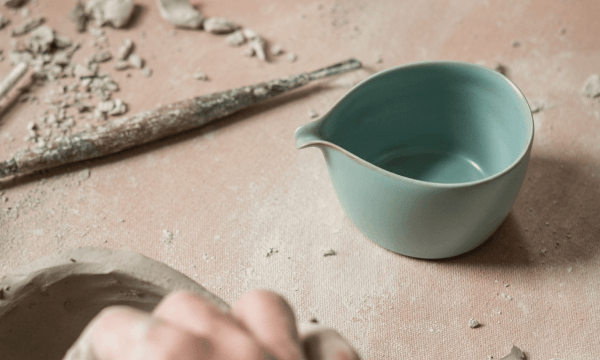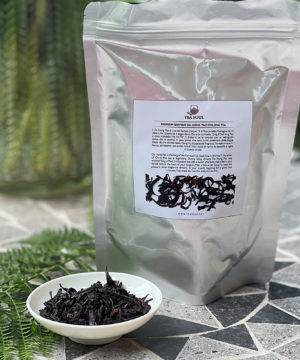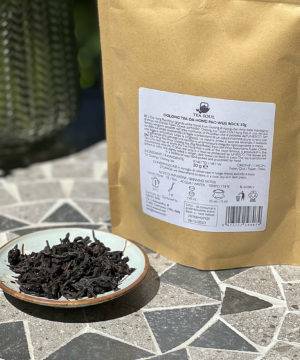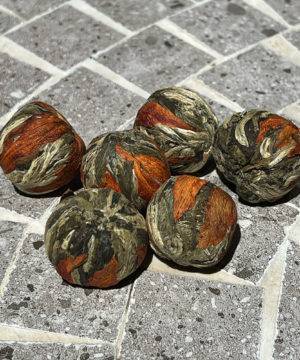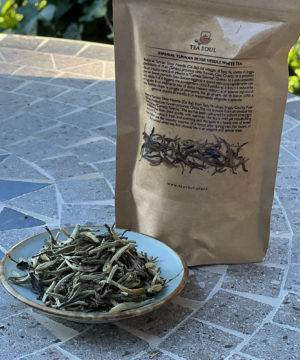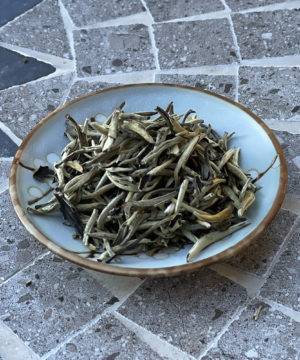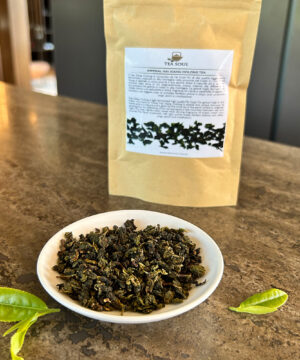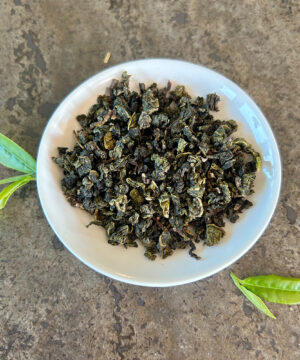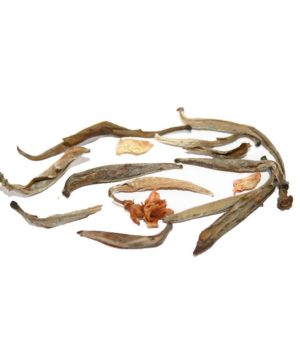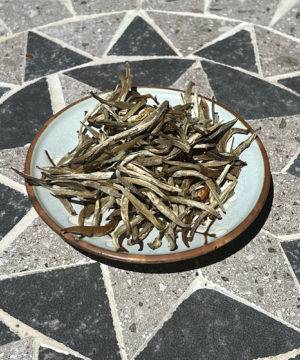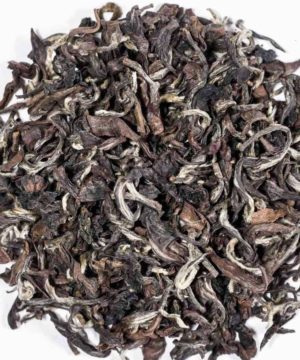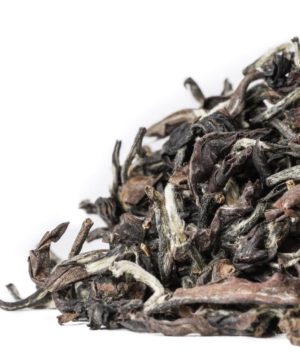



Topaz GABA Oolong Tea 50g
14.20€ Taxes included
Oolong Topaz GABA Tea Oolong gives an infusion with a sweet caramel taste, milky body, and notes of toffee and roasted nuts.
Out of stock
Notify me when it becomes available again
This site is protected by reCAPTCHA and the Google
Privacy Policy and
Terms of Service apply.
SKU: B1020599
Categories: Oolong tea, TrovaPrezzi, REGIONS, Nantou Taiwan, COLLECTIONS, Tea
DON'T MISS DISCOUNTS AND NEWS!
Subscribe to our WhatsApp channel and receive all updates quickly and conveniently!
Subscribe to our WhatsApp channel and receive all updates quickly and conveniently!
The Topaz GABA Oolong Tea has an oxidation level (around 35%) that stays between other two products of us: the Emerald GABA Green Tea and the Amber GABA Oolong tea.
IThe position of this tea, among the other two mentioned before, it’s useful to notice how the taste of gamma-aminobutyric acid can change depending on the oxidation of the camelia’s leaf.
Usually, in fact, in GABA oolong with an high oxidation you can obtain a smooth infuse capable of giving a pleasant warming feeling but with a flavor profile hard to define. Thanks to the moderate oxidation of Topaz GABA Oolong Tea, instead, it is possible to have a more clear tasting experience that can help to get more into the products rich of gamma-aminobutyric acid.
In the cup the infuse shows quite a rich flavor profile. It starts with a sweet, almost biscuity flavor due to the processing, and after a few sips, you also get to feel the more floral and delicate traits related to the low oxidation.
Added to all this is the flavor of GABA, which is shown here with a slightly balsamic hue that might evoke for some the aroma of clove. In the aftertaste there’s also another sweet and tannic taste associable with the flavor of some kind of dark honeys.
Tasting – Sight and smell
Oolong Topaz GABA Tea Oolong has narrowly curled leaves that are brown with lighter areas ranging from coppery brown to ochre. Already the dry brings with it caramel notes and hints of toffee, which are then given off strongly when we infuse the tea: in fact, the moist leaves smell of brown sugar, cookie, almond crunch, toast, and banana, with an elusive floral note barely discernible on the nose. The liquor is-as indeed the name suggests-a topaz yellow tending toward amber: no astringency or bitterness for a tea with an oily body and very silky on the palate.
Tasting Notes
GONG FU CHA
The first infusion of Oolong Topaz GABA Tea gives a delicate liquor that has yet to express so many of its aromas. It is pleasantly sweet of brown sugar and malt cookie, with some shy floral notes. With the second infusion, caramel, toasted and praline almond as well as a fruity hint of ripe banana emerge strongly. The third infusion gives notes that are still sugary but with a body that becomes creamier as the infusions progress: there are notes reminiscent of toffee, fruity notes of guava, and a wonderful unfolding of the initial floral notes reminiscent of fresh rose petals here.
WESTERN
The first sip of Oolong Topaz GABA Tea is sweet on the palate: there are notes of cookie and toffee, followed by a darker sweetness of chestnut honey. Notes of pecans and almond brittle then emerge, along with fruity notes, first reminiscent of banana and then evolving to bring a very slight acidity of wild strawberry. The finish is always very sweet, with a very soft body and dense texture, reminiscent of milk and honey. The persistence is long and caramelized, with a hint of vanilla.
Place of origin
Taiwan
Production
After the harvest the leaves of the Topaz GABA Oolong Tea whiter under the sunlight for a brief period of time before going to rest on bamboo trays indoor. Now it’s time for the producer’s touch who have to decide when and how to activate the oxidation process by bending, manually or mechanically, the leaves.
For GABA tea, furthermore, the product go through the oxidation phase in an environment poor or oxygen so, during this biological process, it develops an higher concentration of gamma-aminobutyric acid.
When the tea gets to the desired oxidation level (here around the 35%) it goes into an electric or coal oven where, thanks to the high temperature, it’s possible to stop the enzymatic activity. After a while the leaves are pull out of the oven and they are ball rolled by a special machinery in order to get the best shape to be stored.
Before being packed the product rest for few hours in order to dissipate a bit of the residues heat and humidity.
Brewing instructions for the Topaz GABA Oolong Tea
We strongly recommend infusing GABA Topaz Oolong Tea in the traditional Chinese method (Gong Fu Cha) with a gaiwan with a capacity of about 150 ml. By following this preparation, multiple infusions can be made with 5 grams of leaves that are useful to best capture all the flavor nuances of the tea.
Heat the water to a temperature of 90°C: conduct a short rinse of the leaves and then an initial 10-second infusion. Keeping the water at the same temperature, you can then continue to exploit the same leaves by adding more water and increasing the infusion time by 5 seconds each time (10 – 15 – 20…).
This tea has a longevity of about 8 infusions.
For a more classic preparation according to the Western style, we recommend 3 grams of leaves in a 200-mL cup with water at 90°C for an infusion time of 3 minutes.
For a better tasting experience, we suggest that you strain the tea as soon as the brewing time is over. The infusion timings we suggest can be slightly modified to your liking to achieve a more or less intense taste.
Store in a cool, dry place away from direct sunlight.
Benefits of GABA tea
Teas with a high concentration of GABA have a particular relaxing effect on our body. Gamma-aminobutyric acid (GABA), in fact, is a neurotransmitter that our body already synthesizes and uses in cases when there is a need to reduce excessive arousal of the nervous system. GABA teas therefore, due to their mild excitatory effect, can be drunk without problems at any time of the day, even by the most sensitive people. In fact, some caffeine is still present in the leaves, but its effect is almost nil due to the high concentration of gamma-aminobutyric acid. In addition to being suitable at all times, GABA teas provide some antioxidants and useful minerals, along with a healthy lifestyle, to slow cellular aging.
Black Friday 50
| Temperature | 90°C |
|---|---|
| Preparation - CUP | 3gr x 200ml / 3 min / 2 infusions |
| Preparation - GAIWAN | 5gr x 150ml / 10-15-20… sec / 8 infusions |
| Season |
Still no Reviews for this Product
Related products
Oolong tea
15.00€ Taxes included
Earn up to 55 points.
This product has multiple variants. The options may be chosen on the product page
12.80€ Taxes included
Earn up to 110 points.
This product has multiple variants. The options may be chosen on the product page
9.20€ Taxes included
Earn up to 81 points.
This product has multiple variants. The options may be chosen on the product page
White tea
10.40€ Taxes included
Earn up to 38 points.
This product has multiple variants. The options may be chosen on the product page
Oolong tea
9.20€ Taxes included
Earn up to 63 points.
This product has multiple variants. The options may be chosen on the product page
White tea
12.71€ Taxes included
Earn up to 113 points.
This product has multiple variants. The options may be chosen on the product page
11.50€ Taxes included
Earn up to 21 points.
This product has multiple variants. The options may be chosen on the product page
8.00€ Taxes included
Earn up to 30 points.
This product has multiple variants. The options may be chosen on the product page


 Italiano
Italiano Français
Français Deutsch
Deutsch